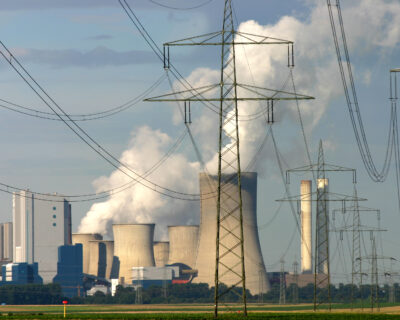Blogs

Uses of Tungsten: A Comprehensive Guide
Tungsten is a versatile and highly valuable metal, prized for its exceptional properties—including the highest melting point of all metallic elements, as well as remarkable density and hardness. Its broad range of applications across numerous industries makes tungsten essential to modern technology and manufacturing.
This guide explores the history, primary uses, and industrial importance of tungsten. Whether you’re a student, a professional, or simply curious, this article will help you understand why tungsten remains indispensable in so many fields.
🧪 Historical Background of Tungsten
Also known as Wolfram, tungsten was first isolated in 1783 by Spanish chemists Juan José and Fausto Elhuyar. The element’s name comes from the Swedish words “tung” (heavy) and “sten” (stone), which reflect its dense nature. The alternative name “Wolfram” stems from the mineral wolframite, which contains a high concentration of tungsten. This dual naming gave rise to the symbol W on the periodic table.
Tungsten’s outstanding hardness and heat resistance made it useful in early metallurgy and toolmaking. Over time, its role expanded to encompass high-tech and industrial applications, where its unique characteristics continue to play a vital role.
🔩 Primary Uses of Tungsten
Because of its durability, heat resistance, and density, tungsten is used across multiple industries. Major applications include alloy manufacturing, electronics, chemical processes, and advanced aerospace and defense technologies.
⚙️ Tungsten in the Alloy Industry
Tungsten in Steel
Engineers incorporate tungsten into high-strength steel alloys to improve toughness, wear resistance, and heat tolerance. Alloys like high-speed steel use tungsten to maintain hardness at elevated temperatures. These materials serve as the foundation for:
- Cutting tools
- Drill bits
- Industrial machinery
Tungsten Carbide and Cemented Carbides
Tungsten carbide is nearly as hard as diamond and resists wear under extreme conditions. Manufacturers combine tungsten carbide with metal binders like cobalt or nickel to produce cemented carbides, which are widely used for:
- Cutting and drilling tools
- Mining equipment
- Aerospace components
Different combinations of carbide alloys suit specific uses:
- Tungsten carbide–cobalt: Ideal for cutting tools
- Tungsten carbide–titanium carbide–cobalt: Common in mining
- Tungsten carbide–titanium carbide–tantalum (or niobium)–cobalt: Used in aerospace
These materials perform reliably in high-friction, high-impact environments, making them a cornerstone in industrial manufacturing.
💡 Tungsten in the Electronics Industry
Tungsten’s high plasticity, low evaporation rate, and strong electron emission make it a top choice in electronics.
Tungsten Filaments
Tungsten wire is commonly used in light bulb filaments, especially in incandescent lamps, halogen lights, and fluorescent tubes. Because it withstands high heat without melting, tungsten ensures long-lasting and efficient light output.
Tungsten Electrodes
Tungsten plays a vital role in gas tungsten arc welding (GTAW) or TIG welding. During the process, a tungsten electrode creates an arc to melt and join metals. Its ability to resist melting and maintain a stable arc makes it ideal for welding.
- X-ray tubes
- Electronic oscillators
- Vacuum tube electrodes
These applications benefit from tungsten’s high-temperature performance and stability.
🧪 Tungsten in the Chemical Industry
- Tungsten disulfide (WS₂): Acts as a dry lubricant and a catalyst in synthetic fuel production. It excels in extreme environments where conventional lubricants fail.
- Tungsten oxide (WO₃): Used for making bronze-colored pigments in paints, coatings, and automotive finishes.
- Calcium or magnesium tungstate: Plays a key role in fluorescent lighting and X-ray screens.
Tungsten’s chemical versatility adds substantial value to various industrial and commercial processes.
🚀 Tungsten in High-Tech Applications
High-Specific Gravity Alloys
Tungsten’s density and strength make it ideal for heavy-duty alloys used in:
- Aerospace (counterweights, gyroscopes)
- Military (armour-piercing projectiles, radiation shielding)
- Medical imaging (radiation therapy collimators)
Alloys like W-Ni-Fe and W-Ni-Cu deliver durability and stability in applications where other metals fall short.
Heat- and Wear-Resistant Alloys
Tungsten maintains its properties even under extreme heat and pressure, which makes it suitable for:
- Rocket nozzles
- Turbine blades
- Jet engine components
✅ Conclusion
Tungsten’s incredible durability, resistance to wear, and heat tolerance ensure its continued relevance in modern industry. From cutting-edge aerospace technologies to everyday electronic devices, tungsten proves its value time and time again.
❓ Frequently Asked Questions
Q1. What are the primary uses of tungsten?
Tungsten is used in alloy production, electronics, chemical manufacturing, and aerospace/military applications.
Q2. Why is tungsten added to steel?
It improves the hardness, wear resistance, and thermal stability of steel, making it ideal for tools and machinery.
Q3. What makes tungsten valuable in electronics?
Tungsten offers high melting points, electron emission, and durability, which suit high-performance electronic components.
Q4. How is tungsten carbide used?
It’s widely used to make cutting tools, mining equipment, and drill bits due to its hardness and resistance to wear.
Q5. What are high-specific gravity alloys?
These are dense tungsten alloys (e.g., W-Ni-Fe, W-Ni-Cu) used in radiation shielding, missiles, and medical imaging devices.
Q6. How does tungsten improve heat-resistant alloys?
Its high melting point and strength allow components to perform under extreme stress, especially in turbines and rocket engines.
Q7. What chemical uses does tungsten have?
It’s used as a catalyst, lubricant, and pigment in paints, coatings, and synthetic fuel production.
🔗 Discover more on our website https://domadia.net/contact/




